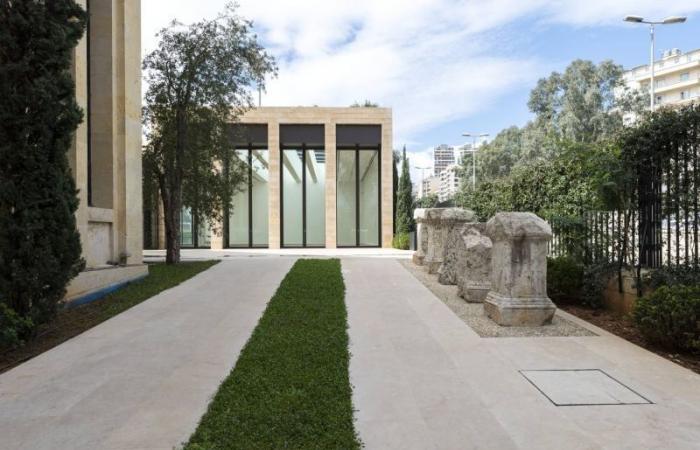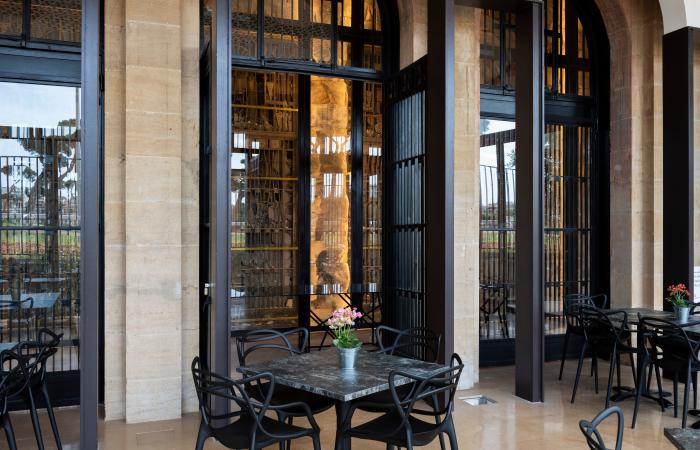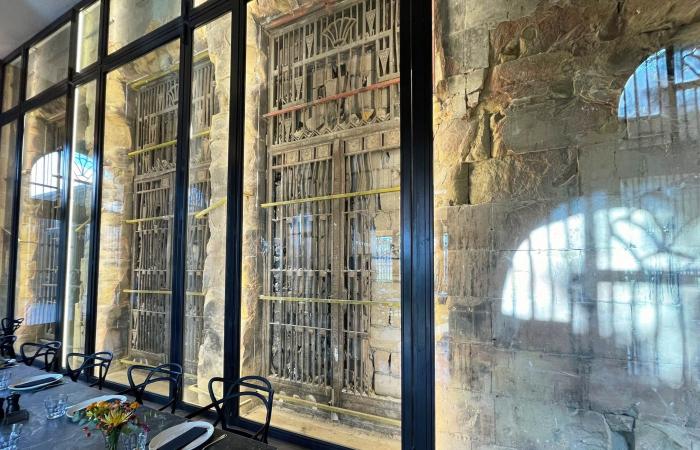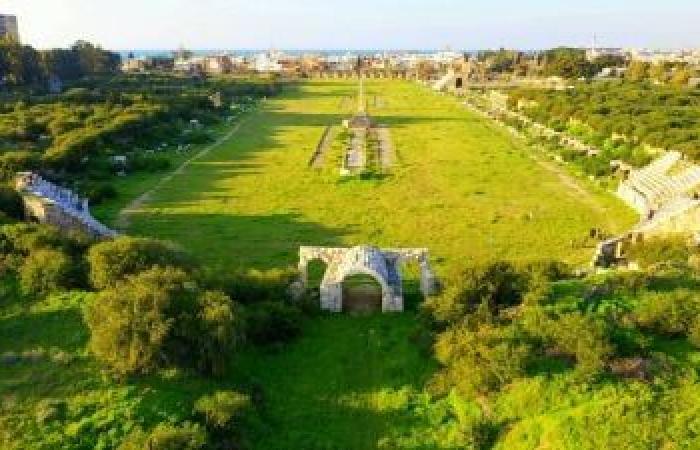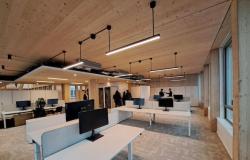Designed by the architect Raëd Abillama, the building overshadows the large Egyptian building where exceptional remains and the largest collection in the world of anthropoid sarcophagi are preserved. The architect had discovered that the original plans included two wings linked together. These plans, dating from 1928, were from museum designers Pierre Leprince-Ringuet and Antoine Nahas. Only the left wing had been built, leaving a free space to the right of the museum (Avenue Abdallah el-Yafi side) in the garden bordering the racecourse.
This is where the Nohad es-Saïd Pavilion for Culture is located, the inauguration of which was planned for Wednesday September 18, 2024, then canceled, the day before and the same day, hundreds of communication devices, pagers and talkies. walkies having indeed exploded simultaneously across the country, causing a large number of deaths and injuries.
The idea of this “modern living space, intended to be more attractive to visitors, particularly younger generations”, emerged in 2014, in the head of Mona Hraoui, president of the National Heritage Foundation (FNP). The action plan was concretized by the signing of a memorandum of understanding between the Ministry of Culture – DGA, represented at the time by Raymond Araygi, and the National Heritage Foundation (ministerial decree nᵒ127/AD). The contract authorizes the FNP to construct a building within the grounds of the national museum under specific conditions.
Powerful and harmonious architecture by Raëd Abillama. Photo Caroline Tabet
Financing
“In this historic and prestigious place,” confides Ms. Hraoui to The Orient-The Daythe multipurpose room is perfect for hosting activities of all kinds, exhibitions, seminars, conferences, round tables, book signings, etc. We must not forget that culture remains the illuminated face of the country. » On the other hand, adds the president of the FNP, “the annex will create a new urban attraction, attract a new audience to the museum national, and to instill in visitors a feeling of pride in their heritage and the history of their country.” In a word, it will allow us to play an important role in renewing and retaining the public.”
And who among us, after spending an hour or two in a museum or an exhibition hall, would say no to a gourmet break to eat or enjoy a coffee? Like the Sursock museum and a number of others around the world, the pavilion now has its own café-restaurant. On the edge of the racecourse, with a capacity of 50 people, it is managed by chef Hussein Hadid. “All revenues generated by the pavilion will be used to cover the maintenance costs of the national museum, and certain cultural and artistic activities organized there,” underlines the former First Lady who would like to particularly thank the former Minister of Culture Raymond Araygi, who undertook all the steps and legal formalities necessary for the realization of this project, but also colleagues and friends for their support and contribution.
Concerning the financing of the construction of the building, Ms. Hraoui indicates that fundraising was carried out with private donors before the financial crisis of 2019. At the entrance to the annex there is a plaque with their names. But the project having become expensive, and requiring significant funds, the FNP was offered the contribution of Mrs. Salma es-Saïd who, wanting to immortalize the memory of her late husband Nohad es-Saïd, undertook to pay the amount similar to that of the foundation. In recognition, the large multipurpose room intended for artistic and cultural events now bears the name of this great lover of Islamic metal Art, who died in 1982, at the age of 46. Es-Saïd had amassed exceptional pieces, executed between the 10th and 19th centuries. His collection has often been loaned to internationally renowned museums such as the Guggenheim, or the Arthur M. Sackler gallery, the art museum of the Smithsonian Institution in Washington DC (United States). “Each of the pieces is unique and represents what is most beautiful in the genre,” writes Massumeh Farhad, curator of the premises. In 2011, the specialist James W. Allan also published the work by Philip Wilson Islamic Metalwork: The Nuhad es-Said Collection.
Coffee break or more. Photo Caroline Tabet
Beirut Museum of Art or aesthetic emotion
Like the committee created to manage the museum store, the foundation has designated a special unit to manage the programming of activities at the Nohad es-Saïd Pavilion. It includes the former Minister of Culture Raymond known as Rony Araygi; Salwa Salman, daughter of Nouhad es-Saïd and former president of the Children Cancer Center of Lebanon (CCCL); Lama Tammam Salam, activist in the fight against child abuse with the Himaya association and head of the museum shop; the gallery owner Saleh Barakat and the architect Samir Ali Ahmad, as well as Youmna Ziadé Karam who represents the National Heritage Foundation within the Beirut Heritage Initiative (BHI). Adeline Souaid Dahdah has been appointed to the position of director. For its first cultural activity, the committee collaborated with the Beirut Museum of Art (BeMA) for an inaugural exhibition around the themes of “real and imaginary”. The event puts the spotlight on a magnificent installation, “Hymn to Love”, by Alfred Tarazi, and an anthology of modern and contemporary works belonging to the Ministry of Culture, or to private collections. Entitled “Doors and passages”, it was designed and prepared by BeMA co-directors Juliana Khalaf and Taline Boladian, as well as artistic director Clémence Cottard Hachem. Not to be missed.
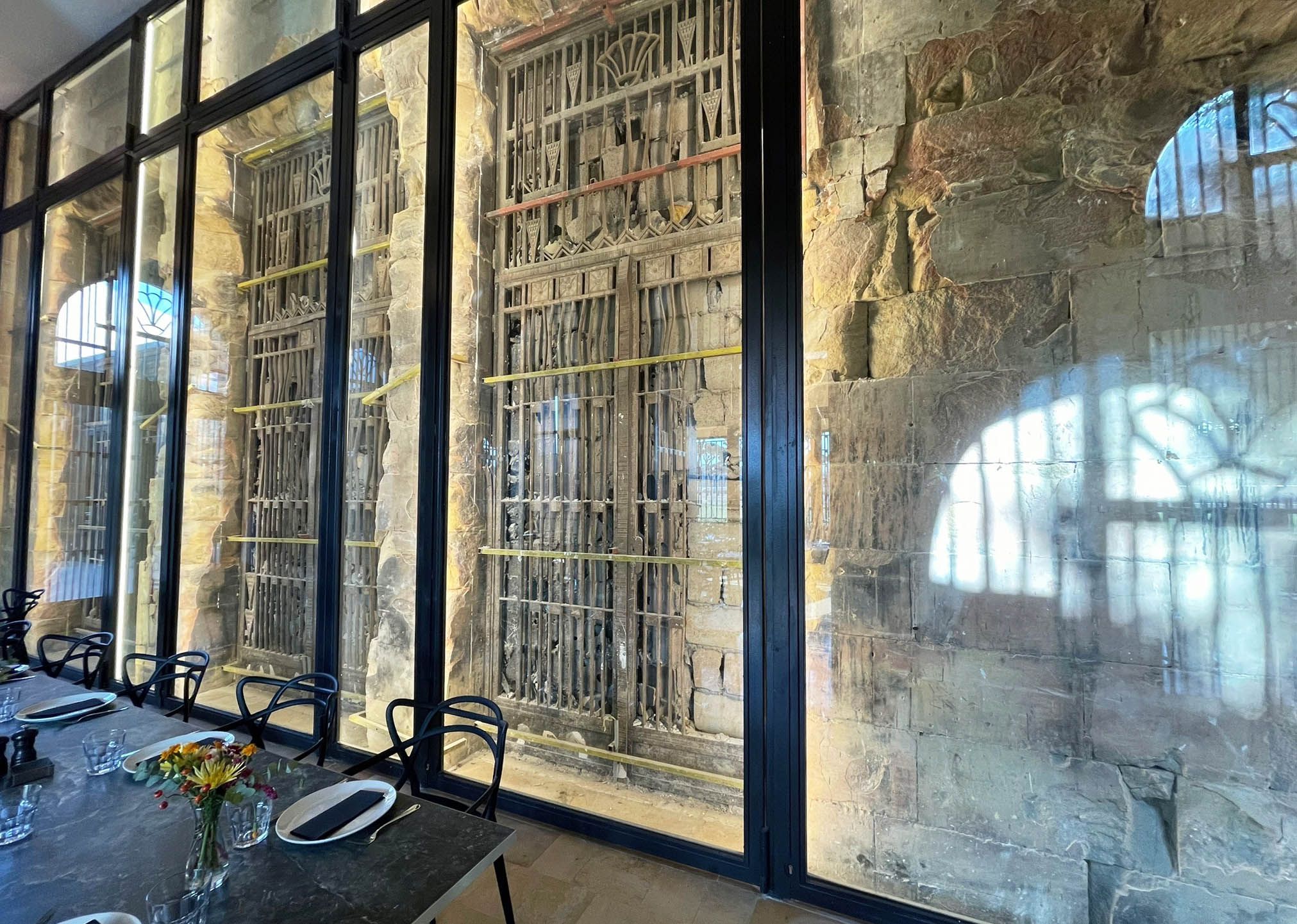 The wall separating the two wings of the building built in 1982 by the Lebanese archaeologist and historian Maurice Chéhab has been preserved. Photo Carla Henoud
The wall separating the two wings of the building built in 1982 by the Lebanese archaeologist and historian Maurice Chéhab has been preserved. Photo Carla Henoud
Architecture
Designed in “forné” stone (local stone, the same as that of the museum), the annex which is a magnificent architectural project by Raëd Abillama occupies a plot of 1,854 m2 with 928 m2 of terraces and gardens. A single volume is located on the garden level, the White Box, a 1,100 m2 multipurpose room intended for artistic and cultural events. It is topped by a glass roof, called skylightswhose system blocks light to transform places into black roomor to diffuse it overhead by opening the sunshades. Enough to create a quality of light suitable for each event. Because the place will host conferences, screenings of documentary films as well as temporary exhibitions. Intended for administrative offices, the first basement also has a 500 m2 exhibition room and a 190 m2 mezzanine. The second basement accommodates the technical room and the kitchen. And, in a nod to contemporary history, the wall separating the two wings of the building, built in 1982 by the Lebanese archaeologist and historian Maurice Chéhab (1904-1994), curator of the National Museum of Beirut and director general of the service antiquities for almost twenty years, to protect the museum, has been preserved as is with the tags that militiamen engraved during the Lebanese civil war.
Read also
The blast of the explosions endangers the remains of Baalbeck and Tire

Finally, let us point out that the choice of the location and the implementation of the structure takes on all the more importance as it occupies the space previously provided for in the (archived) plans of the designers of the national museum, Pierre Leprince-Ringuet and Antoine Nahas, for an extension of the museum institution.
As a reminder, the National Heritage Foundation is not its first initiative. Created on September 20, 1996, by ministerial decree no. 127/AD, and chaired by the former First Lady of Lebanon Mona Hraoui, the FNP is a private institution, with a board of directors and an executive committee. . Its objective is to promote and mobilize all means of action in favor of the safeguarding of Lebanese heritage. In cooperation with the Ministry of Culture – DGA, it works on the restoration and conservation of sites and buildings of archaeological importance or historical character.
In November 1996, the National Heritage Foundation took on this gigantic undertaking, determined to rehabilitate the national museum whose destruction due to the civil war was terrible. Mona Hraoui, then First Lady of Lebanon, launched fundraising operations to finance the work. Donations received in 1997 and the museum’s concerts made it possible to finance the restoration of the interior of the buildings and the majority of the sculptures and small pieces, as well as other projects. At that time, the total cost of the museum’s rehabilitation reached more than 5 million dollars, of which 4 and a half million were offered to the foundation by private donors committed to the restoration and redevelopment of the national museum; the rest represents the State’s contribution which made it possible to carry out this project.
The foundation also includes the revaluation of the steles of Nahr el-Kalb (2002-2003), the creation of the Museum of Rural Life in Terbol (2003-2004) and the Ras Baalbeck ecomuseum (2008), to name just a few.
Address: Rue de Damas, Beirut
Such. : +961 1 614038- +961 7 9115531
Open Tuesday to Sunday, 10 a.m. to 5 p.m.
Free entry.
https://www.instagram.com/nespavilion/p/C_kT9iHMW8O/
Designed by the architect Raëd Abillama, the building overshadows the large Egyptian building where exceptional remains and the largest collection in the world of anthropoid sarcophagi are preserved. The architect had discovered that the original plans included two wings linked together. These plans, dating from 1928, were from the museum’s designers…
- -
